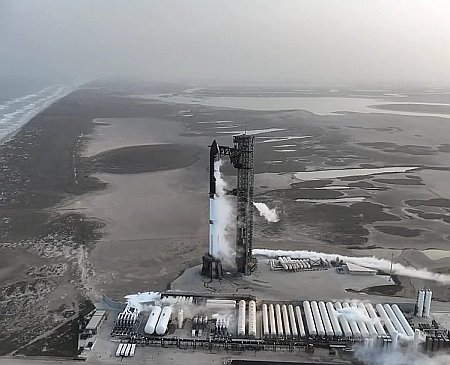Russia launches classified satellite
Russia today successfully placed a classified military satellite into orbit, its Soyuz-2 rocket lifting off from its Plesetsk spaceport in northeast Russia.
The Russians provided extensive information about the places where the rocket’s lower stages and strap-on boosters would crash, issuing “warnings for the planned rocket boosters impacts between Yar Sale and Ports Yakha settlements, as well as in Panaevsk and Khadyta-Yakha sites.” These crash zones have been used previously. Though unlike China Russia routinely warns its people about such things, like China it has never had a problem dumping these stages on their head.
The leaders in the 2025 launch race:
60 SpaceX
30 China
6 Rocket Lab
6 Russia
SpaceX still leads the rest of the world in successful launches, 60 to 49.
It is entertaining to see that the private American rocket company Rocket Lab is matching Russia launch for launch this year. Once Russia launched dozens of times per year. Now it will do well to achieve one launch per month. Rocket Lab meanwhile is trying to top twenty launches in 2025. It might not meet that number, but it is quite likely to top Russia when the year ends.
Russia today successfully placed a classified military satellite into orbit, its Soyuz-2 rocket lifting off from its Plesetsk spaceport in northeast Russia.
The Russians provided extensive information about the places where the rocket’s lower stages and strap-on boosters would crash, issuing “warnings for the planned rocket boosters impacts between Yar Sale and Ports Yakha settlements, as well as in Panaevsk and Khadyta-Yakha sites.” These crash zones have been used previously. Though unlike China Russia routinely warns its people about such things, like China it has never had a problem dumping these stages on their head.
The leaders in the 2025 launch race:
60 SpaceX
30 China
6 Rocket Lab
6 Russia
SpaceX still leads the rest of the world in successful launches, 60 to 49.
It is entertaining to see that the private American rocket company Rocket Lab is matching Russia launch for launch this year. Once Russia launched dozens of times per year. Now it will do well to achieve one launch per month. Rocket Lab meanwhile is trying to top twenty launches in 2025. It might not meet that number, but it is quite likely to top Russia when the year ends.






